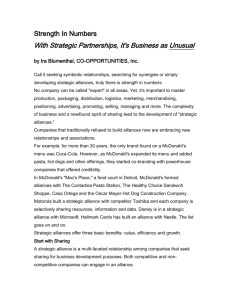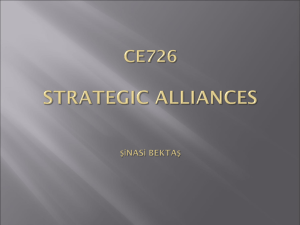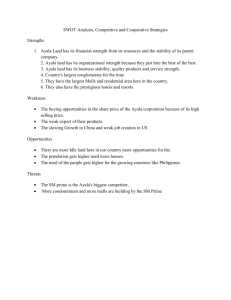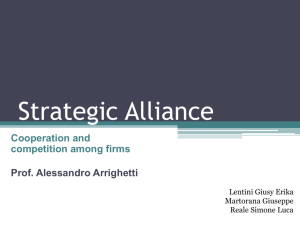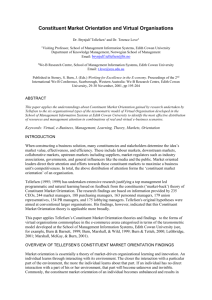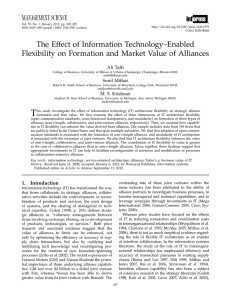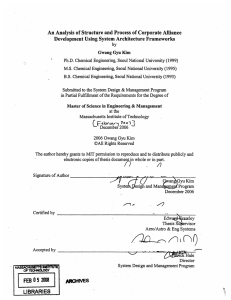Strategic Alliances
advertisement
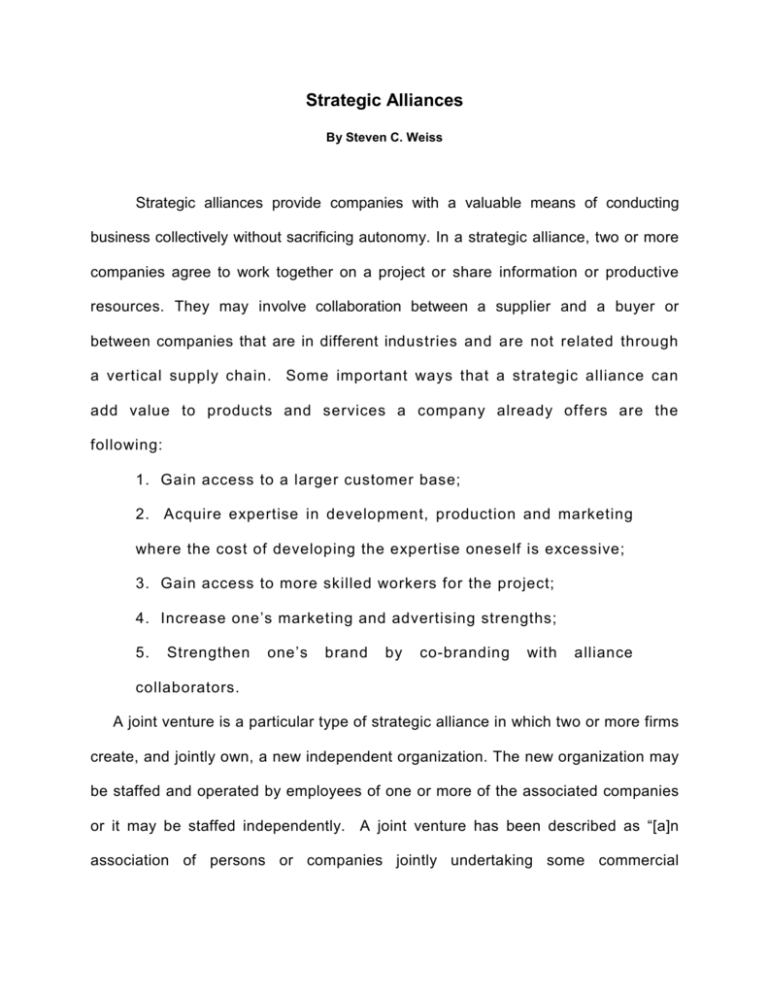
Strategic Alliances By Steven C. Weiss Strategic alliances provide companies with a valuable means of conducting business collectively without sacrificing autonomy. In a strategic alliance, two or more companies agree to work together on a project or share information or productive resources. They may involve collaboration between a supplier and a buyer or between companies that are in different industries and are not related through a vertical supply chain. Some important ways that a strategic alliance can add value to products and services a company already offers are the following: 1. Gain access to a larger customer base; 2. Acquire expertise in development, production and marketing where the cost of developing the expertise oneself is excessive; 3. Gain access to more skilled workers for the project; 4. Increase one’s marketing and advertising strengths; 5. Strengthen one’s brand by co-branding with alliance collaborators. A joint venture is a particular type of strategic alliance in which two or more firms create, and jointly own, a new independent organization. The new organization may be staffed and operated by employees of one or more of the associated companies or it may be staffed independently. A joint venture has been described as “[a]n association of persons or companies jointly undertaking some commercial enterprise; generally all contribute assets and share risks. It requires a community of interest in the performance of the subject matter; a right to direct and govern the policy in connection therewith, and duty; which may be altered by agreement.”1 The Joint Venture differs from a General Partnership, which has been described as “A business owned by two or more persons not organized as a corporation with a sharing of losses and profits as well as joint and several liability of the partners for debts of the partnership.”2 Alliances and joint ventures fall somewhere between arm's-length business transactions and full vertical integration of component companies into one firm. The parties remain independent business organizations as in arm’s-length business transactions. However a strategic alliance involves more coordination, cooperation, and information sharing than an arm's-length transaction. As discussed above, a strategic alliance may be desirable when the development, production, or marketing of a product requires expertise in a number of areas; it is excessively costly for any one company to develop all the necessary expertise itself; and successful development, production or marketing requires close coordination between the various areas of expertise. As an illustration, consider the strategic alliance between McDonald's and Toys "R" Us. In 1989 Toys ”R” Us-Japan was created through a joint capital investment by McDonald’s Japan and the US toy maker. The two companies had a service contract through 2018, under which, the fast food chain received fees for giving business advice in Japan such as on the selection of sites for stores. It involved an expertise that McDonald's of Japan could 1 2 Black’s Law Dictionary, Sixth Edition, West Publishing Co., 1990 i.d. offer to Toys "R" Us at a cost that is much less than Toys "R" Us would incur if it entered the Japanese market on its own, even at a small scale. Success also required capabilities in marketing toys and operating a fast-food restaurant, skills that are not closely related to each other. Ultimately the parties ended up in court litigating termination of the agreement, which also goes to show that in any business venture, it is important to have the advice of legal counsel to evaluate liability exposure, tax issues and other matters for the participants, and help to mitigate potential problems in advance by way of a properly prepared written agreement.
